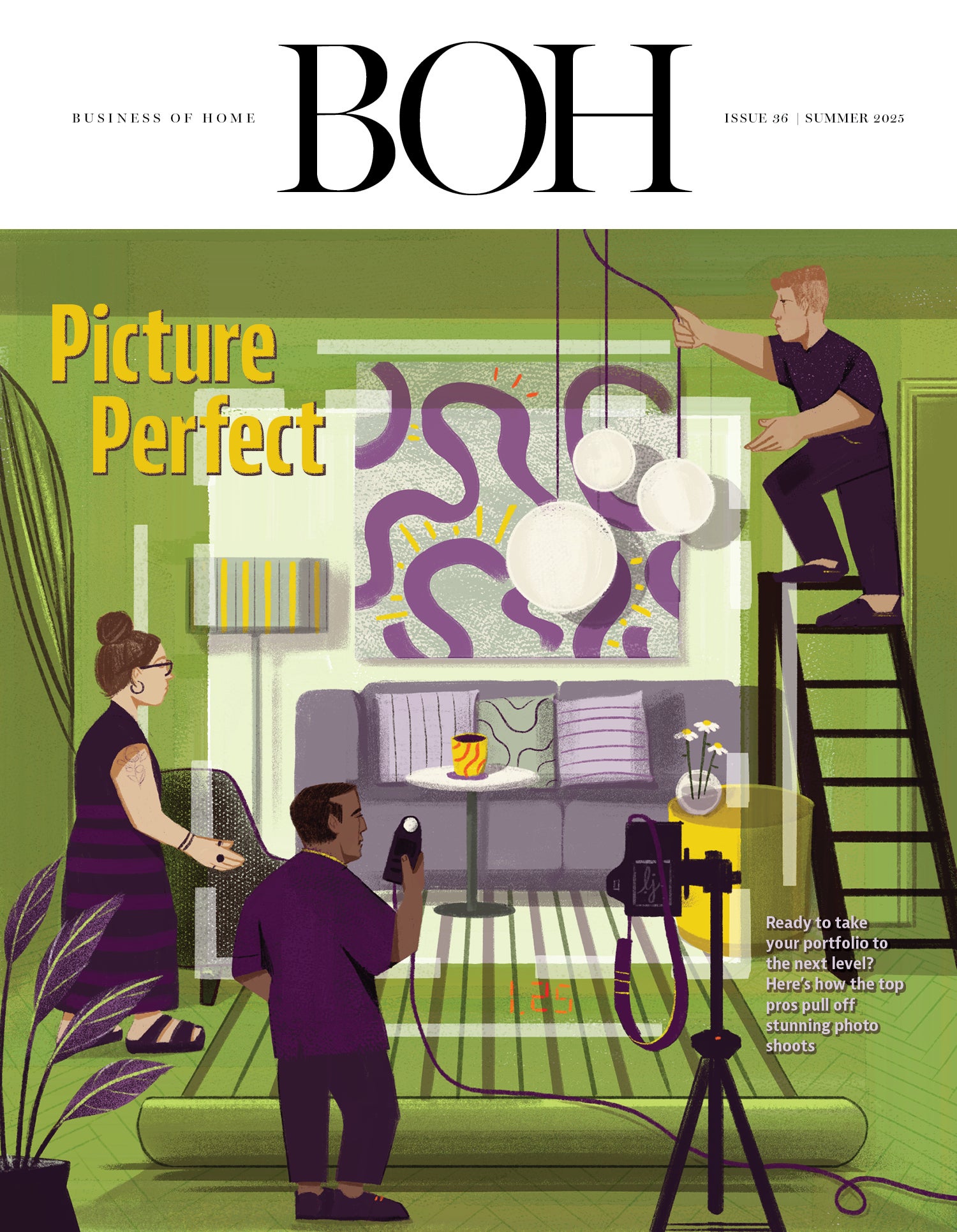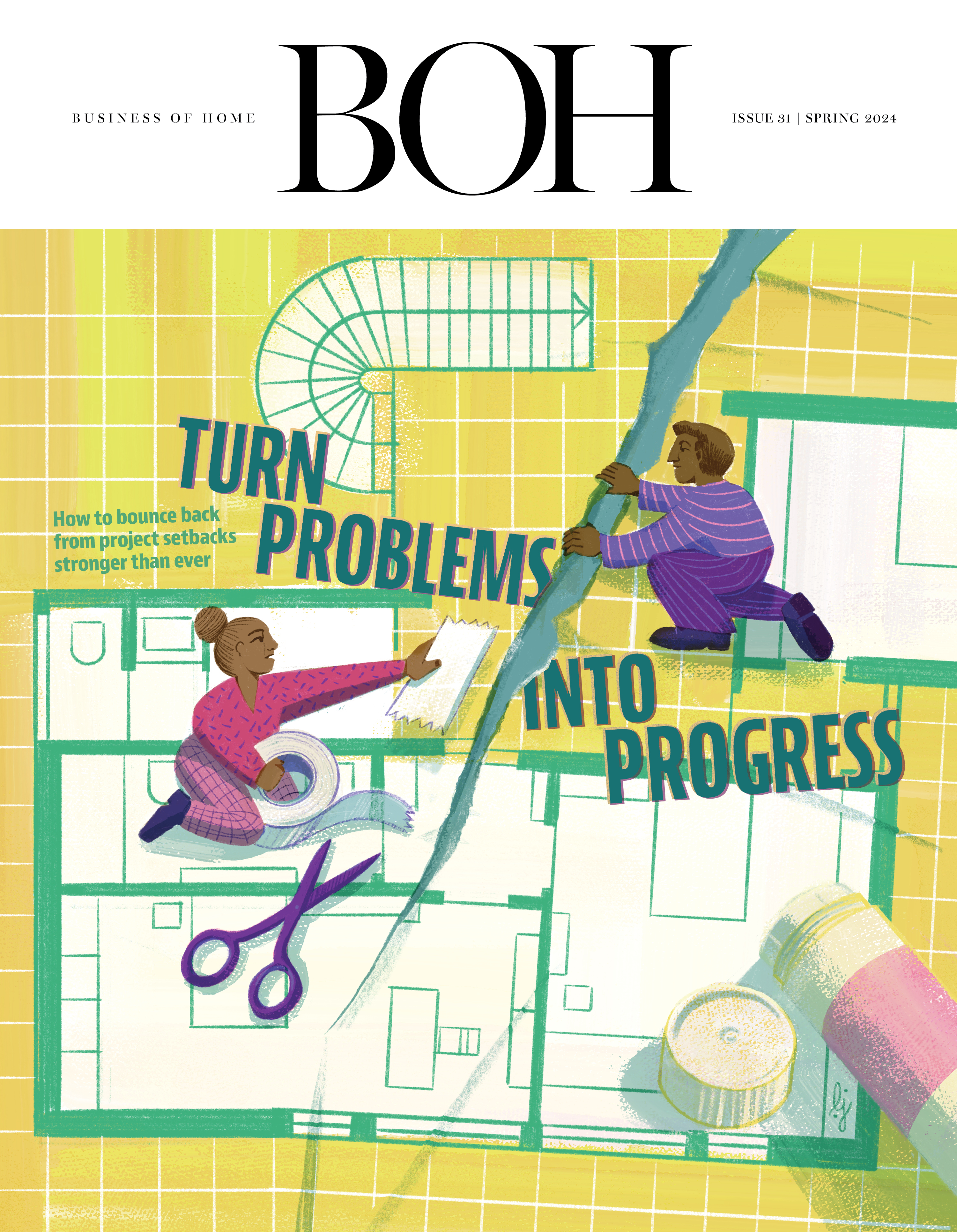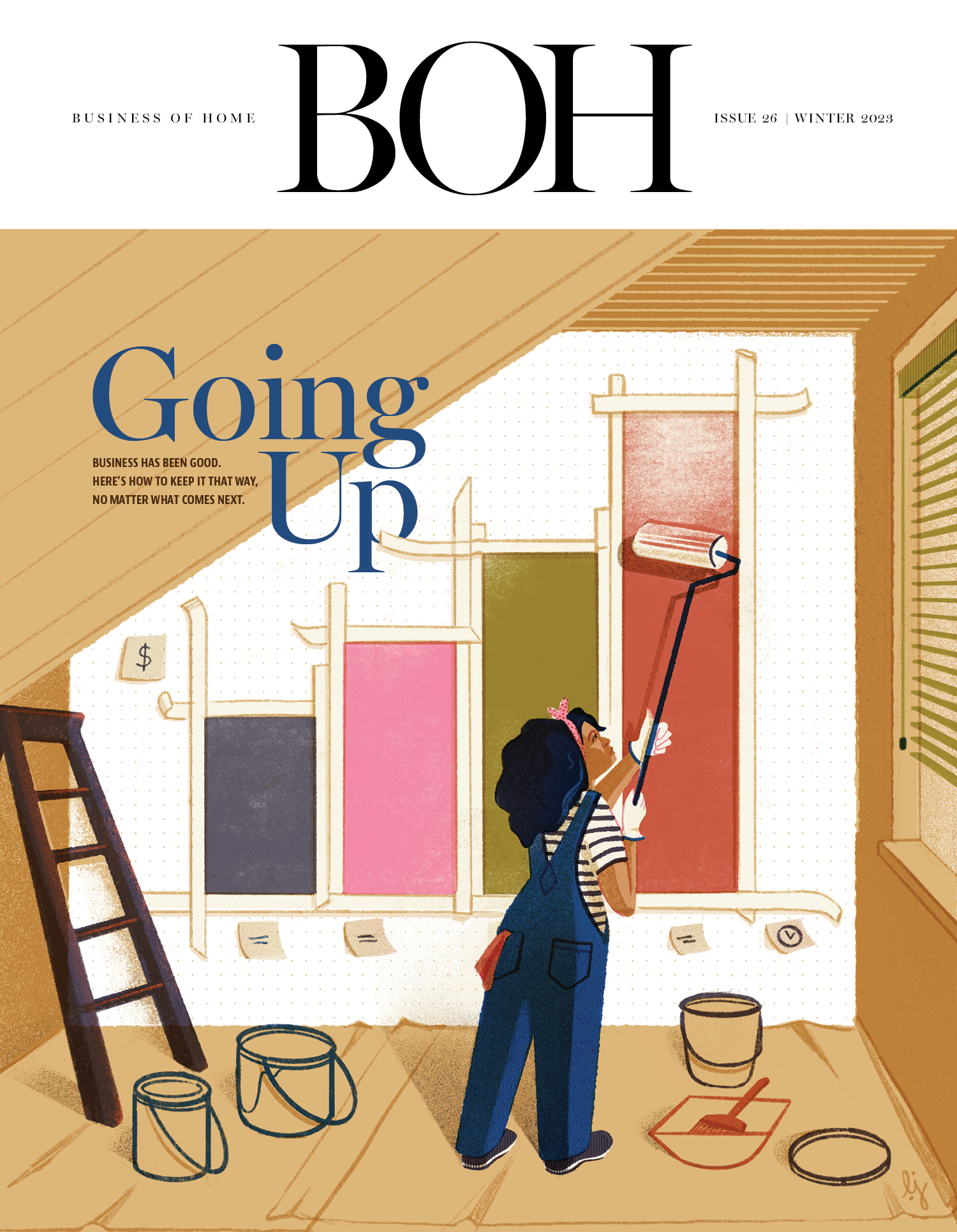Admit it: You’re a bit of a control freak, aren’t you?
If you nodded your head yes, you’re in excellent company. Many, if not most, interior designers are perfectionists. Their success is rooted in wanting things done their way.
As a recovering perfectionist, I understand where you’re coming from. Ask my team and (at least when I’m not in the room) they would probably confirm that I’m still a perfectionist.
But here’s the question: Is a controlling management style really serving you, or is it bordering on micromanagement—something that often leads to unhappy team members? If you want to be a true leader who inspires the best work from each and every employee, it’s important to avoid the tendency to control, obsess over details and demand perfection.
Becoming a great leader requires curiosity, patience, mentoring skills and a willingness to coach rather than criticize. Great leaders communicate openly, encourage learning through mistakes and avoid punishing people for trying. This approach leads to more innovation, greater enthusiasm and a stronger culture.
Here are some red flags that you could be overmanaging—and tips to move in a more productive direction.
Signs You Might Be Micromanaging Your Team
- You think or say, “It’s easier and faster to do it myself.”
- You think your team makes too many mistakes, and you secretly believe that no one can do things as well as you can.
- You don’t have a training process to ensure your team understands your expectations and standards. Instead, you “wing it” and assume others can read your mind.
- When someone brings you work that is 90 percent on target, you fix it yourself instead of giving the person feedback so they can improve.
- You tell the team member exactly how to do each step, then correct them when they don’t follow the precise steps in the way you would do it, or to your level of competence.
- You expect someone with years of experience to do a task “your way” immediately during onboarding, instead of delegating the outcome. You assume they understand your firm’s aesthetic and will meet your standards automatically.
- You assign tasks without a thorough delegation process and then criticize the results, forgetting to use a feedback loop to ensure the team member understood all aspects of the assignment before starting.
- When a team member shows you their work for approval, you tell them what’s wrong instead of pointing out what’s right and asking questions to understand their reasoning so that you can give supportive guidance.
- Team members stop communicating, even when you ask for feedback in a meeting. They feel as if their opinions don’t matter, or that you’ll override their decisions anyway.
- You have high turnover or consistent feedback that your team wants more autonomy, indicating that you’re still controlling too much of the process.
How to Embrace Macromanagement
- Document your processes on one page (or in project management software) so your team isn’t reinventing the wheel each time they start a project.
- Train your team multiple times on those processes.
- Describe your company style and aesthetic in a visual document, and hold teaching sessions to reinforce it.
- Involve your team in regular charettes, and have them present designs to you to build their presentation skills.
- Document your drawing and specification standards so your team understands your quality expectations.
- Establish project timelines with interim reviews so you don’t discover at the last minute that the work isn’t acceptable.
- Correct people in private, and compliment them in public.
- Don’t take credit for your team’s work.
- Always ask team members to repeat back what they heard to ensure they understood your instructions.
- Develop a training plan for each team member and clearly identify what they need to learn or improve.
Final Thought
I’d encourage you to commit to being the leader of your firm, not just a manager of tasks. Provide context for assignments instead of handing them off quickly without feedback. Inspire rather than punish. Coach rather than criticize. When you implement these suggestions, you’ll build a more engaged team—and happier clients—as a direct result of your leadership.
For more information on the state of the design industry today and how to position yourself for success, download the 2024 Interior Design Business Survey report, which is produced by Pearl Collective, Interior Talent and Business of Home.
____________
Gail Doby is co-founder of Pearl Collective (formerly Gail Doby Coaching & Consulting), an interior design business consultancy that helps designers, architects and other creatives increase their profitability. Doby ran her own design firm in Denver for nearly 20 years and has a degree in finance and banking. Since 2008, she has been helping designers scale their businesses profitably and reach financial freedom. As a coach, mentor and business transformation specialist, she shares innovative ways to overcome the roadblocks, challenges and detours creative entrepreneurs face. She is also the bestselling author of Business Breakthrough: Your Creative Value Blueprint to Get Paid What You’re Worth. Her goal is to empower design industry clients to differentiate themselves, drive measurable results, achieve business projections, and create personal satisfaction through game-changing strategies and business practices.





























